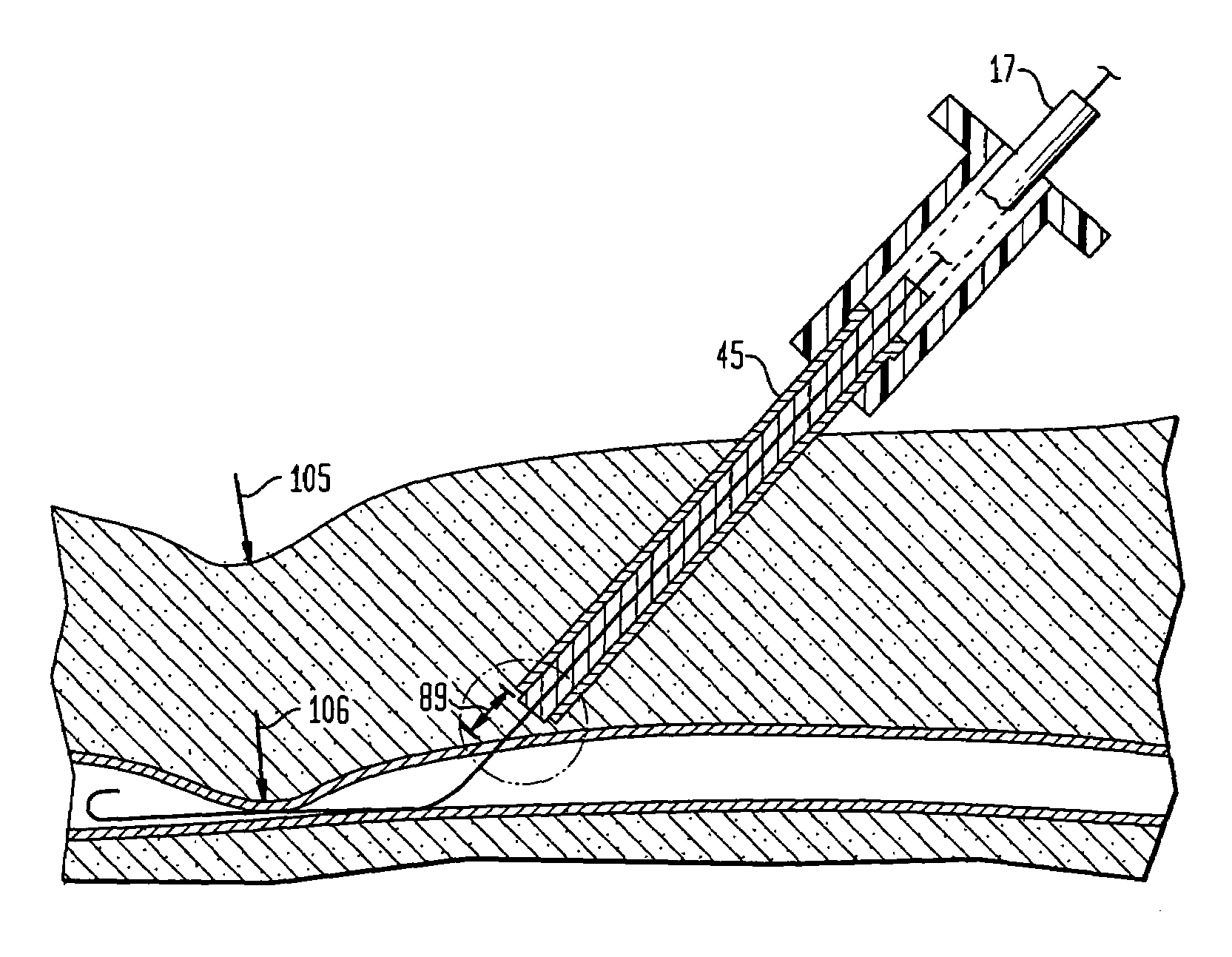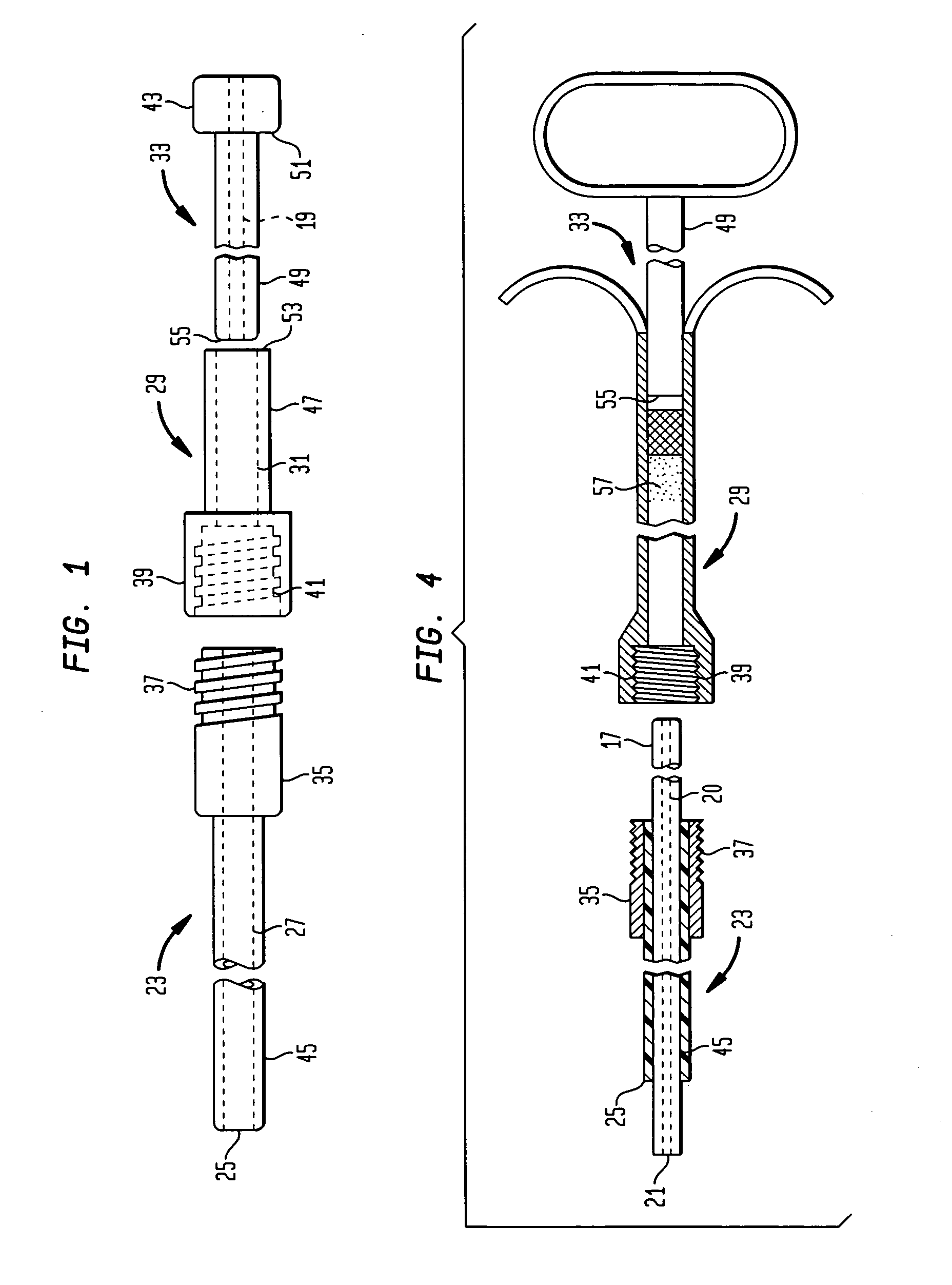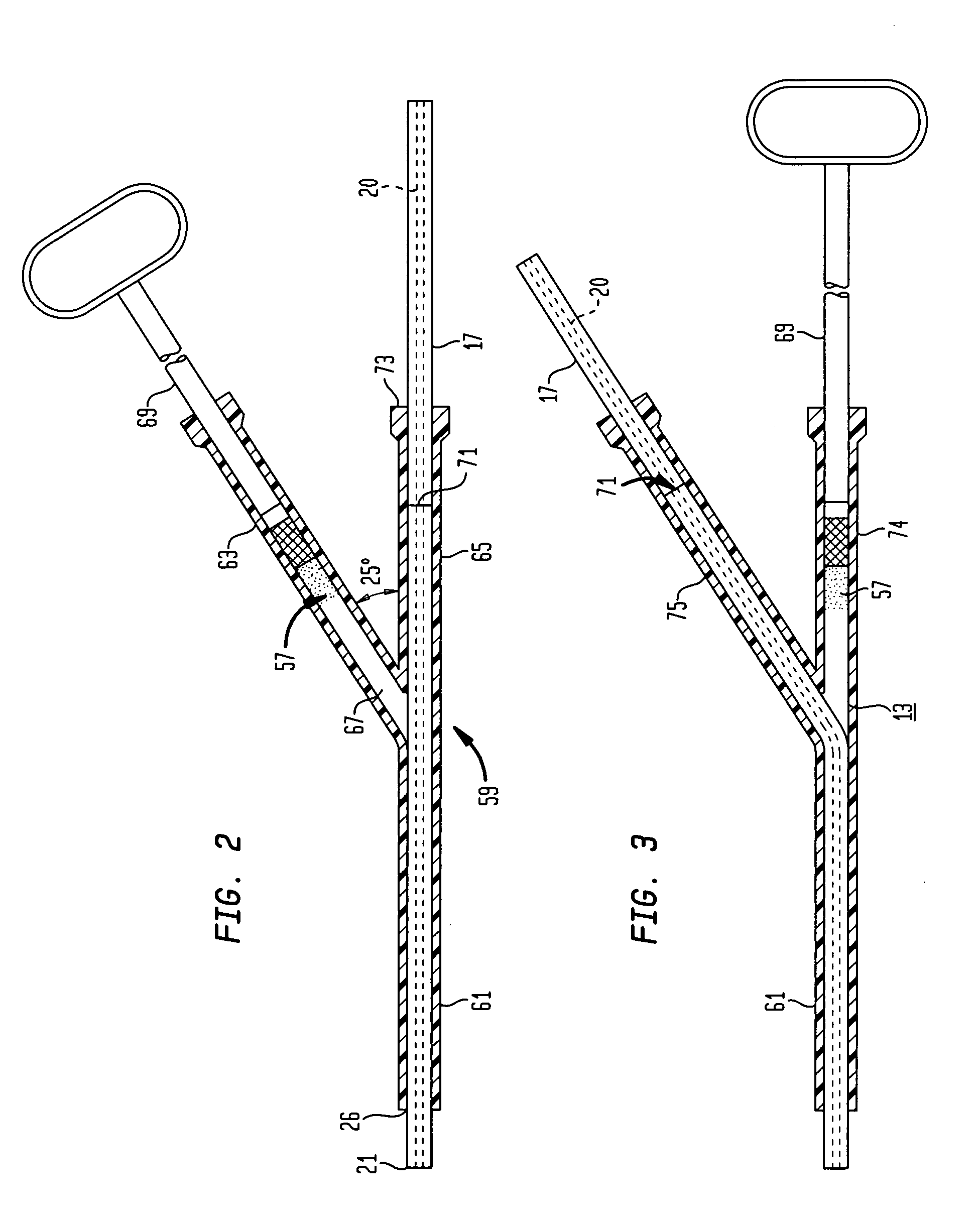Device and method for sealing puncture wounds
a puncture wound and device technology, applied in the field of puncture wound sealing methods, can solve the problems of prolonged personal attention of health care professionals, prone to reopen unexpectedly wound closures, painful and uncomfortable procedures, etc., and achieve good sealing
- Summary
- Abstract
- Description
- Claims
- Application Information
AI Technical Summary
Problems solved by technology
Method used
Image
Examples
Embodiment Construction
[0030]In certain procedures, for example, intra-aortic balloon pumping (“IABP”), percutaneous transluminal coronary angioplasty (“PTCA”) and angiography, as best seen in FIG. 5, a catheter or other device 7 is inserted, often over a guide wire 15, through a guide cannula 3 into an artery 11, most frequently, the common femoral artery in the groin area of the patient's leg 1. When the procedure (e.g., counterpulsation) has been completed, the device (e.g., the catheter), the guide wire and the guide cannula must be removed and the wound closed.
[0031]In accordance with one embodiment of the instant invention, wounds of this type are closed by inserting a plug into tissue wound or channel 9, and holding it against the outside of the artery wall over arterial puncture 13 for a short period of time until a good self-sustaining hemostatic seal is established. Although punctures of the sort made by percutaneous procedures will generally, after removal of all cannulas and catheters, be in t...
PUM
 Login to View More
Login to View More Abstract
Description
Claims
Application Information
 Login to View More
Login to View More - R&D
- Intellectual Property
- Life Sciences
- Materials
- Tech Scout
- Unparalleled Data Quality
- Higher Quality Content
- 60% Fewer Hallucinations
Browse by: Latest US Patents, China's latest patents, Technical Efficacy Thesaurus, Application Domain, Technology Topic, Popular Technical Reports.
© 2025 PatSnap. All rights reserved.Legal|Privacy policy|Modern Slavery Act Transparency Statement|Sitemap|About US| Contact US: help@patsnap.com



